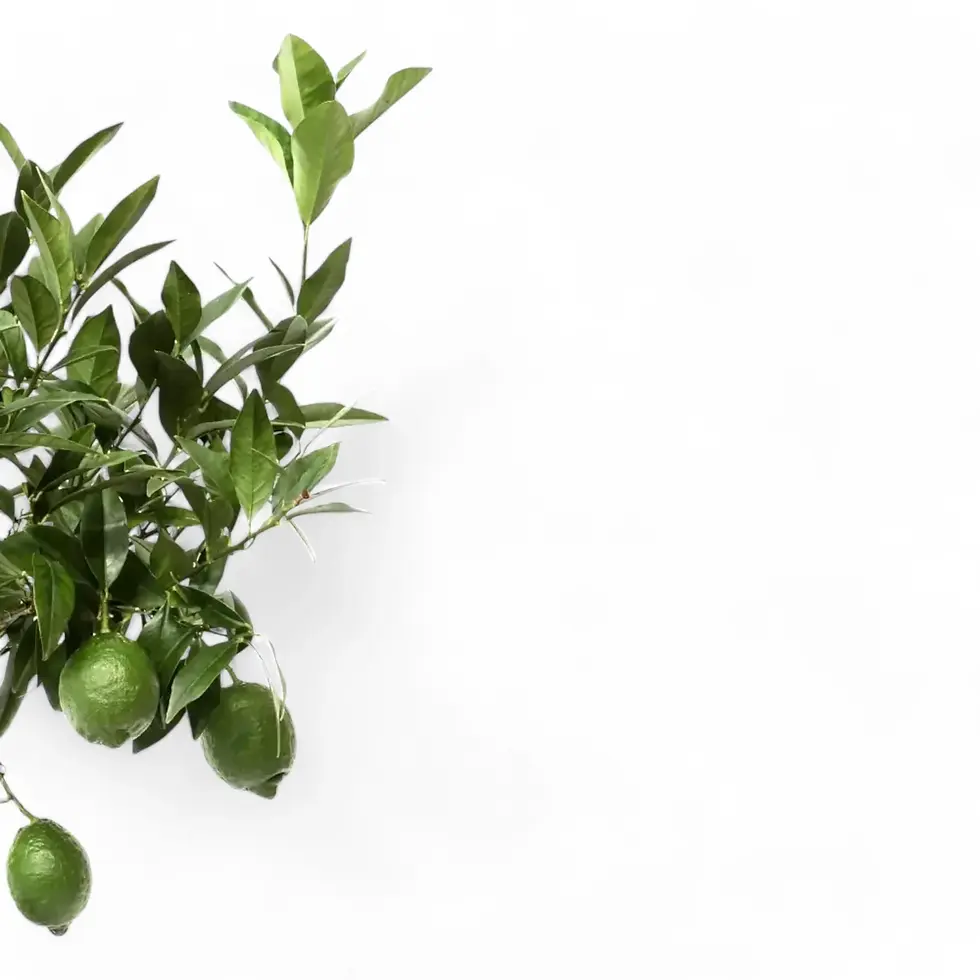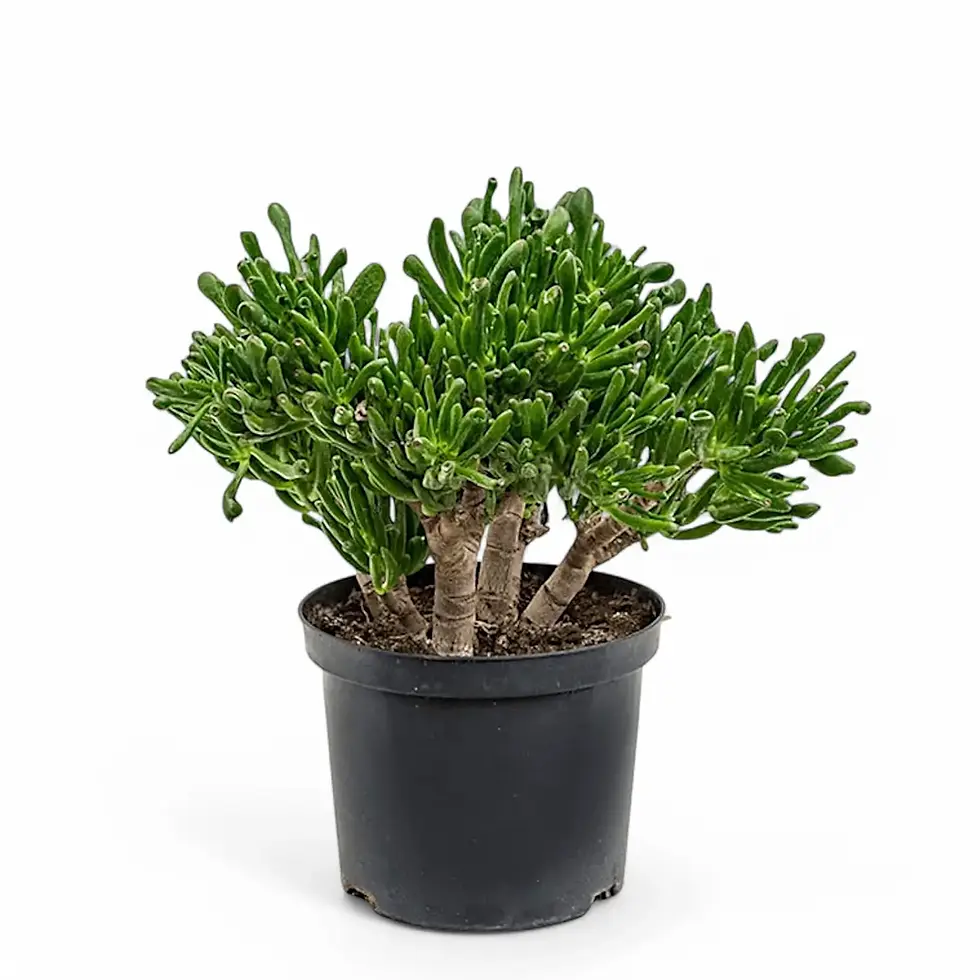Citrus 'Green Lime' – Your Guide to Thriving Lime Trees Indoors
Picture a charming indoor tree with glossy green leaves emitting a refreshing citrus aroma. Bright green limes grow among the foliage, their smooth, vibrant skin hinting at a tangy, zesty treasure inside. Citrus 'Green Lime', also known as Key Lime, is an exceptional choice for adding both beauty and flavor to your home.
Unique Features and Benefits
- Compact and Versatile: Ideal for indoor growing, reaching up to 1.5 meters tall.
- Aromatic Flowers: Delicate white blossoms fill the room with a refreshing scent.
- Edible Delights: Fresh, tangy limes perfect for cocktails, cooking, and desserts.
- Evergreen Appeal: Retains lush foliage year-round, bringing life to any space.
Essential Details
- Native Habitat: Originates from the warm, humid tropics of Southeast Asia.
- Indoor Growth: Reaches up to 1.5 meters in height with a bushy, upright structure.
- Growth Rate: Moderately fast under optimal conditions.
- Toxicity: Not safe for pets—ingestion can cause digestive issues.
- Longevity: Can produce fruit and thrive for decades with proper care.
How to Care for Citrus 'Green Lime'
- Placement: Position in abundant sunlight, away from cold drafts.
- Light: Requires 6-8 hours of bright, direct sunlight daily. Grow lights can supplement low-light conditions.
- Watering: Keep soil evenly moist but not soggy. Water when the top 2-3 cm of soil is dry.
- Humidity: Prefers 50-60% humidity. Use a humidifier in dry environments.
- Temperature: Thrives in 20°C - 30°C. Avoid exposure below 10°C.
- Soil: Requires well-draining, citrus-specific mix (loam, sand, and organic matter).
- Repotting: Every 2-3 years into a slightly larger pot with drainage holes. Terracotta pots improve airflow.
- Fertilizing: Apply citrus-specific fertilizer every 4-6 weeks, ensuring magnesium and iron content.
- Propagation: Grow from seeds or semi-hardwood cuttings (2-3 nodes recommended).
- Hydroponics: Adapts well to Leca or hydroponic setups (pH 5.5-6.5).
- Pruning: Encourages bushy growth, removes weak branches, and maintains shape.
- Pollination: Self-pollinating, but gently brushing flowers boosts fruit production.
Common Issues and Solutions
Pests:
- Aphids, spider mites, and scale insects – Treat with neem oil or insecticidal soap.
- Citrus leaf miners – Remove affected leaves and use yellow sticky traps.
Root Rot:
Ensure excellent drainage and avoid overwatering.
Leaf Problems:
- Yellow leaves – Check for overwatering or nutrient deficiencies.
- Browning tips – Often caused by low humidity or irregular watering.
Fungal Diseases:
- Sooty mold – Address pest infestations first and clean leaves with soapy water.
- Powdery mildew – Improve air circulation and treat with fungicides.
Fruit Drop:
Avoid stress factors like inconsistent watering or inadequate lighting.
Nutrient Deficiencies:
Use fertilizers with added micronutrients to prevent pale or mottled leaves.
Additional Tips for Success
- Add a moss pole or trellis for support if the plant becomes top-heavy.
- Replicating its native tropical conditions ensures thriving growth.
- Regularly clean leaves to enhance photosynthesis.
Etymology and Botanical Details
The genus Citrus derives from Latin, referring to citrus trees. The species name aurantiifolia combines "aurantium" (orange) and "folia" (leaves), highlighting its orange-like foliage. Botanist Walter Tennyson Swingle played a key role in citrus taxonomy.
Frequently Asked Questions
- Can Citrus 'Green Lime' thrive indoors year-round? Yes, with sufficient light and proper care.
- When will it start producing fruit? Typically within 2-3 years under optimal conditions.
- Do I need multiple trees for fruit production? No, it is self-pollinating.
- How do I know when limes are ready to harvest? When they feel slightly soft and emit a strong citrus scent.
- Can I move it outdoors in summer? Yes, as long as temperatures stay above 15°C.
Bring Home the Fresh Zest of Citrus 'Green Lime'!
Add a touch of freshness and practicality to your home. Order yours today!
Citrus × aurantiifolia 'Green Lime'
Citrus 'Green Lime' is ca. 80 cm tall and comes in a 22 cm pot.































